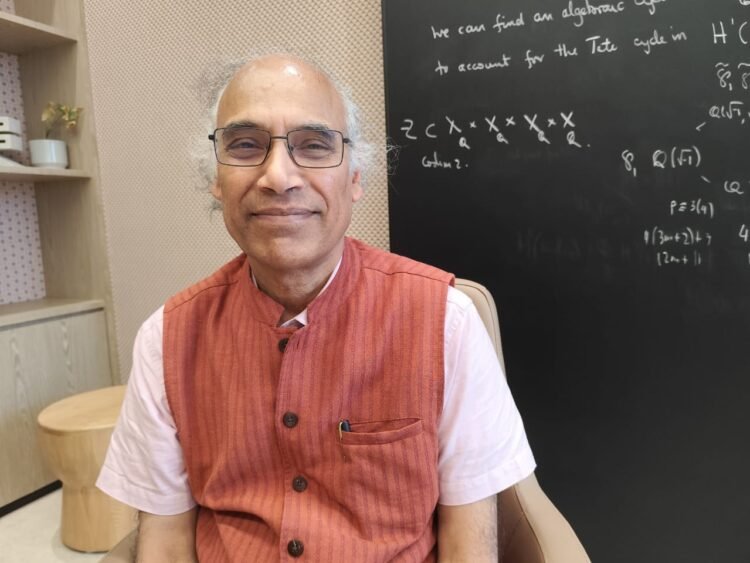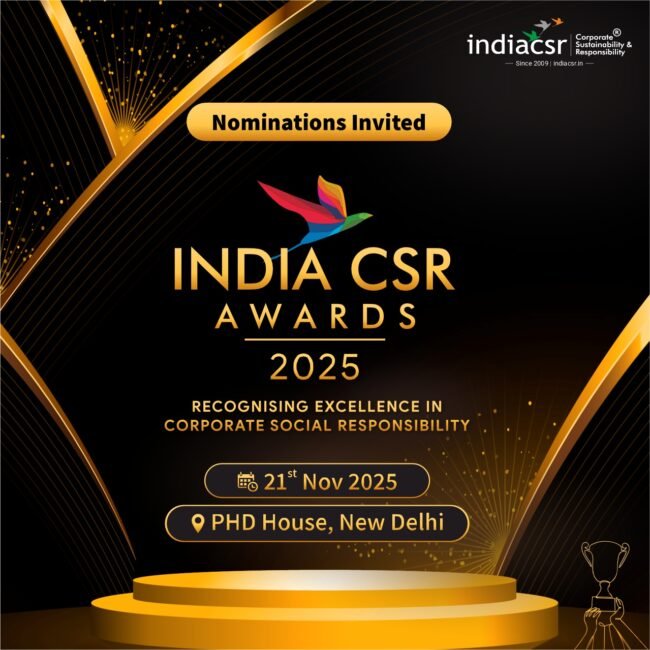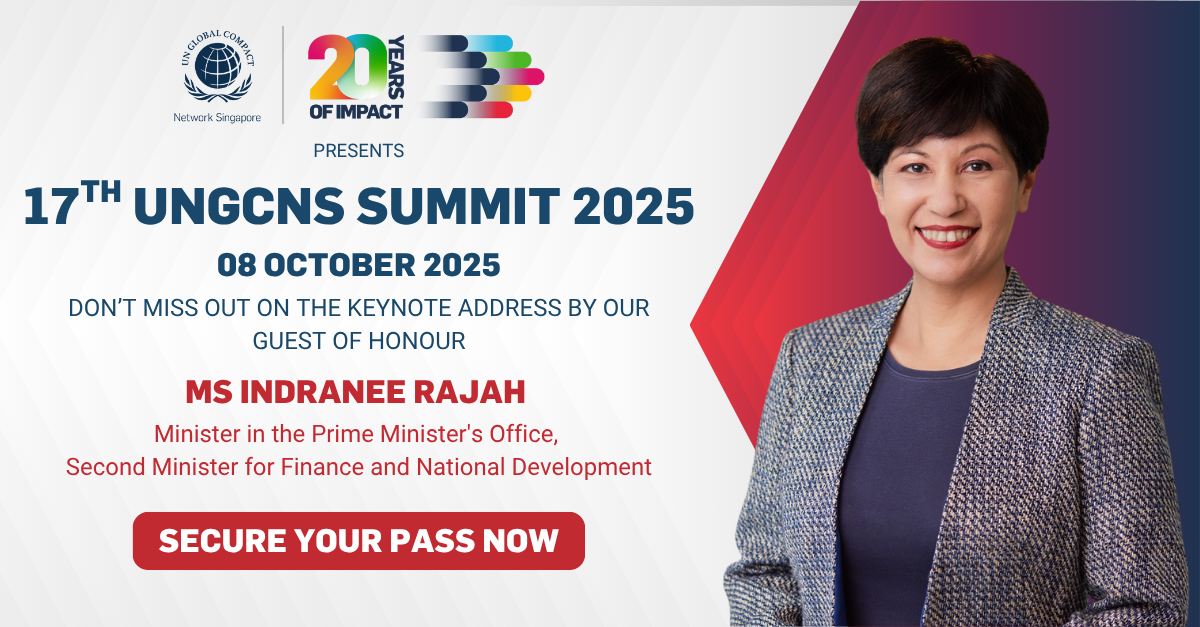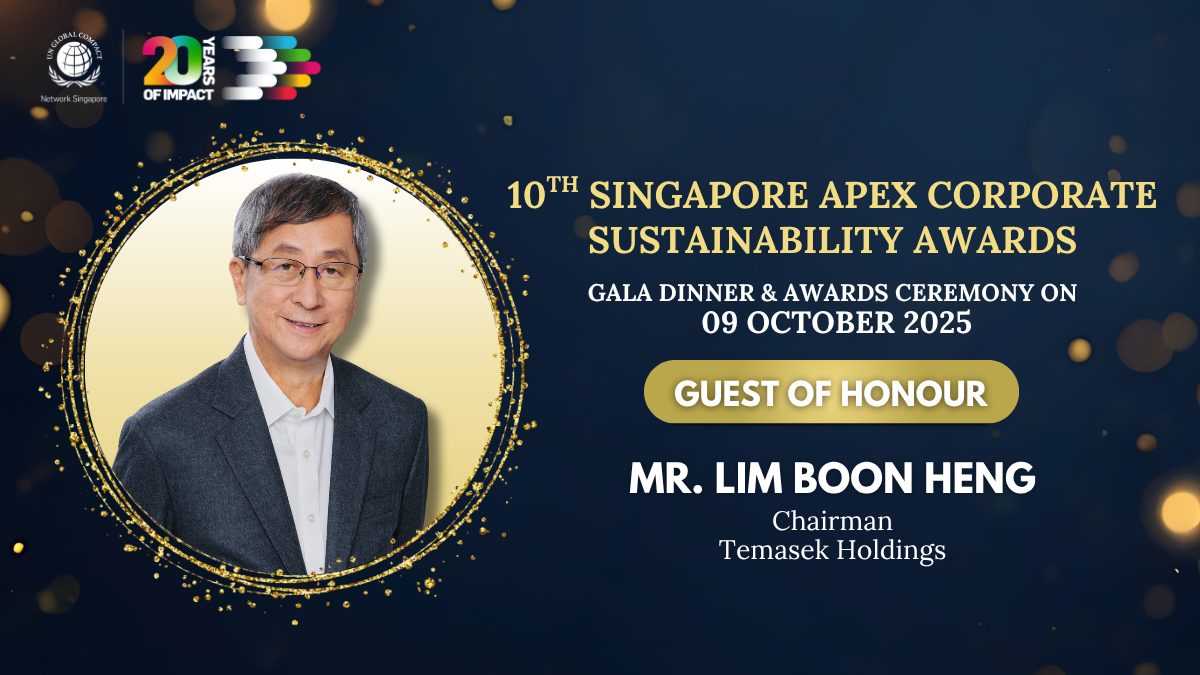The Lodha Mathematical Sciences Institute (LMSI) in Mumbai has been established by the Lodha Foundation, the philanthropic arm of Abhishek Lodha, which has been endowed with an unprecedented Rs. 20,000 crore.
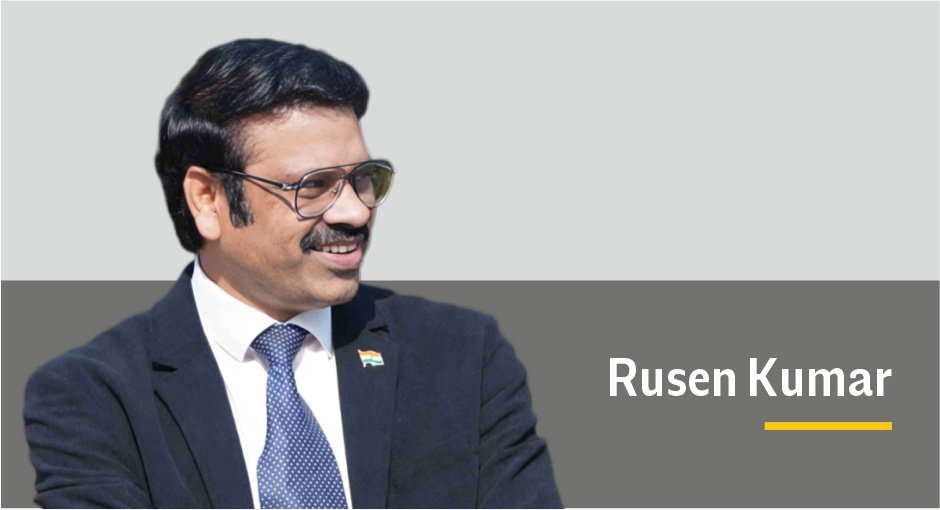
By Rusen Kumar
MUMBAI (India CSR): India has taken a historic leap in the field of mathematics with the launch of the Lodha Mathematical Sciences Institute (LMSI) in Mumbai on August 17, 2025. Backed by a landmark endowment from the Lodha Foundation, the institute promises to be a game-changer for Indian mathematics, aiming to nurture talent, accelerate research, and position India as a global leader in mathematical sciences.
To understand the vision behind the institute and the larger role of mathematics in national development, Rusen Kumar sat down with Prof. V. Kumar Murty, Director of LMSI and one of the world’s foremost number theorists. In this wide-ranging conversation, Prof. Murty discusses the inspiration behind the institute, India’s current standing in mathematics, the urgent need for a national mathematics strategy, and his ambitious plans to convene the Indian Congress of Mathematicians in 2026.
Edited excerpts:
Rusen Kumar. Q1. What inspired the creation of the Lodha Mathematical Sciences Institute?
Prof. Murty: The inspiration came from Mr. Abhishek Lodha, who strongly believed that giving back to society must go beyond compliance-driven CSR obligations. While the Lodha Foundation was already active in several areas like women’s empowerment and nurturing young talent, mathematics emerged as a natural choice because of its role as the backbone of innovation. For decades, India has been producing brilliant students, yet much of their potential remained untapped due to lack of structured opportunities. When the Foundation considered India’s goal of becoming a developed nation by 2047, they recognized that intellectual capital would be just as important as industrial or financial capital. Mathematics, which powers technologies from Google search algorithms to mobile phone applications, stood out as a discipline that could transform society. When I was approached to lead the initiative, I saw it as a chance to provide both structure and resources to Indian mathematical talent. Having worked with Indian institutions regularly, I was convinced that the missing piece was not intelligence, but opportunity. The Lodha Foundation’s commitment and vision offered a way to create a world-class institute that could benefit both India and the global mathematical community.
***
Rusen Kumar. Q2. Why mathematics, when there are so many pressing social sectors?
Prof. Murty: This question often arises, because people see mathematics as abstract or academic, not something that directly touches daily life. But if you look closely at modern life, mathematics is everywhere. Farmers in remote villages use mobile phones to decide when to sow crops and which markets will fetch the best price. Fishermen calculate nutrients to improve their yield using data shared on digital platforms. These benefits are possible because complex mathematical ideas have been converted into user-friendly technologies. The algorithms behind Google search, for example, rely on linear algebra. Video compression, financial modeling, artificial intelligence — all are rooted in mathematics. Supporting mathematics is, therefore, supporting the invisible engine that powers every aspect of modern society. Mr. Lodha understood this deeply. Rather than distributing resources across many fields superficially, he chose to invest in the foundation discipline that fuels all others. Around the world, governments speak of AI strategies or quantum missions, but mathematics is the quiet enabler behind them all. For India, investing in mathematics is also an investment in democratizing opportunity, because once barriers of fear are broken, anyone — regardless of background — can access the knowledge economy.
***
Rusen Kumar. Q3. How does India compare with other countries in mathematics?
Prof. Murty: India has a long mathematical heritage, from ancient texts to modern contributions, but in contemporary education and research, we are yet to realize our full potential. At the school level, our system is strong. Students learn systematically, and their basics are usually solid. But the problem begins at the undergraduate level, where global peers are learning advanced concepts while many Indian students stagnate. This gap widens at graduate school, leading to a decline in international competitiveness. However, there are inspiring exceptions. The Chennai Mathematical Institute (CMI), founded by the visionary Prof. C.S. Seshadri, addressed this very gap by building a strong undergraduate program. Today, CMI graduates secure admission into the best universities worldwide — Harvard, MIT, Princeton. That proves our talent is not the issue; our structure is. Alongside, cultural perceptions also limit us. Parents often question the career prospects of mathematics: “Will you only become a teacher?” But mathematics is not merely a profession; it is the engine that drives innovation, from cryptography to space exploration. If we can correct structural gaps and shift cultural perceptions, India has the potential to be a global leader in mathematics.
***
Rusen Kumar. Q4. What barriers prevent individuals and society from embracing mathematics?
Prof. Murty: At the individual level, I believe there are only two real barriers. The first is fear. Many students are conditioned to think mathematics is difficult or intimidating. The second is lack of love. Too often, mathematics is seen as a drudgery — something done because teachers or exams demand it. But when fear is replaced with curiosity, and when love for the subject is cultivated, the human mind responds with extraordinary ability. At the societal level, the barrier lies in perception. In India, mathematics is not seen as prestigious. Families may encourage children to become doctors, lawyers, or engineers, but rarely mathematicians. In the West, the equivalent dream is to become a sports star. Both reveal the same truth — society values certain professions but overlooks mathematics. What we must communicate is that mathematics is not a fallback career. It is as prestigious and vital as any. Every major technological or economic breakthrough has mathematical roots. The moment parents and students realize that mathematicians are not just teachers but drivers of progress, the perception will shift. Breaking fear, cultivating love, and enhancing prestige are the three steps that will transform mathematics education in India.
***
Rusen Kumar. Q5. Should India have a national mathematics vision or strategy?
Prof. Murty: Without question, yes. Today, governments across the world invest in national strategies for artificial intelligence, quantum computing, or industrial growth. Yet, mathematics — the very discipline powering these fields — is rarely given strategic focus. I have raised this even in Canada, my home country. When I asked the government where their mathematics strategy was, officials struggled to understand. India, however, might be more receptive. Given the government’s focus on long-term national development, a National Mathematics Mission could be proposed and well received. But it must be designed as an ecosystem, not a silo. Mathematics spans the entire spectrum: schoolchildren learning basics, undergraduates struggling with advanced concepts, researchers working at the cutting edge, and industries applying mathematical tools in finance, data, or technology. A strategy must therefore link education, research, industry, and policy into one vision. It must also involve communicators, because if mathematicians speak only in their own language, the message will not spread. Media, educators, and policymakers must together highlight why mathematics is central to India’s ambition of becoming a developed nation by 2047. Such a mission would not just support mathematicians but empower the entire country.
***
Rusen Kumar. Q6. How do you see mathematics education in rural India?
Prof. Murty: Rural India holds immense untapped talent, but it also suffers from acute shortages of good mathematics teachers. Ideally, interest in mathematics should begin by Class 6, when children are naturally curious. At this stage, kind and supportive teachers can transform fear into fascination. By Class 9, students need another push, but unfortunately, many encounter teachers who are harsh, discouraging, or simply ill-prepared. This perpetuates fear and alienation. The shortage of qualified mathematics teachers adds to the crisis. Very few students pursue MSc or PhD in mathematics, leading to an insufficient supply of educators. We must address this urgently by raising the status and respect for teaching. Teachers should be paid well, trained deeply, and celebrated for their role in shaping the nation. The Indian Constitution mandates the development of a scientific temper, but this cannot happen without mathematics. Every scientist, engineer, and innovator stands on mathematical foundations. If rural India is to be part of the knowledge economy, mathematics must be made approachable and respected. A cultural shift, starting from schools and extending into villages, is essential. Only then will India’s true mathematical potential be unlocked at a national scale.
***
Rusen Kumar. Q7. What is the idea behind the Indian Congress of Mathematicians?
Prof. Murty: Globally, the mathematical community has regular congresses. Every four years, the International Congress of Mathematicians (ICM) brings together the brightest minds, awards the Fields Medal, and reviews progress in the discipline. Regions also host their own: Europe has one, the Americas have another, and China has started its own. India, despite its rich tradition, lacked such a forum. That is why we are launching the Indian Congress of Mathematicians in December 2026, in Mumbai. Its aim is twofold. First, to bring together mathematicians of Indian origin worldwide, so that talent does not remain isolated or undiscovered. Second, to expose Indian students and researchers to pressing global challenges, ensuring they work on problems of consequence. This congress will also strengthen India’s identity in mathematics. When individuals realize they belong to a larger community, their sense of purpose grows. We also hope to involve state governments, inviting them to host future editions as part of their education vision. Beyond conferences, we are also considering launching a mathematics magazine, to track India’s progress in a way policymakers can understand. Together, these initiatives will galvanize India’s mathematical movement.
***
Rusen Kumar. Q8. Should India also have a magazine or journal to track its mathematics movement?
Prof. Murty: That is a truly excellent suggestion. Inside the institute, we have often spoken about the need for communication tools, but hearing it again from outside reinforces its importance. A magazine — not a purely technical journal — would fill a crucial gap. Policymakers, principals, education ministers, and even parents need to understand why mathematics matters to India’s development. A technical journal may circulate only within academic circles, but a magazine could highlight conferences, new initiatives, inspiring student stories, or government collaborations in a language accessible to all. It would also help create a national narrative: mathematics not as a distant, difficult subject, but as a living movement shaping India’s future. Importantly, such a publication must involve communicators, not just mathematicians. When we explain, it may sound abstract or self-serving. But when journalists, writers, or educators present it, the story resonates with wider society. We need objective voices to convey why mathematics deserves policy-level attention. A magazine could also provide continuity by connecting schools, colleges, researchers, and policymakers into one ecosystem. It would give mathematics an identity in India’s education discourse, something visible, consistent, and respected.
***
Rusen Kumar. Q9. What are the core activities of the Lodha Mathematical Sciences Institute (LMSI)?
Prof. Murty: Our institute has been designed to serve as both a hub for high-quality research and a platform for collaboration. One of our key activities is running thematic programs. Each term, we choose a cutting-edge area of mathematics and dedicate four to six months to exploring it deeply. For instance, this term we are focused on arithmetic statistics, with globally renowned mathematicians like Fields Medalist Manjul Bhargava participating. Alongside this, we host conferences, both linked to these thematic programs and as independent events, to encourage collaboration. Another flagship initiative is the Indian Congress of Mathematicians, planned for December 2026. This event will bring together Indian and international scholars, creating a global forum for India’s mathematical community. We also emphasize collaborative support, offering a space for mathematicians within and outside India to meet and work together. Finally, we are addressing the challenge of overburdened faculty through fellowships. Many professors spend more time on administrative duties than research. By funding fellowships, we aim to free them to focus on mathematics. For example, supporting Dr. Nina Gupta in Kolkata allows her to pursue groundbreaking work while strengthening her home institution. Our philosophy is simple: empower researchers, and the impact will cascade across universities, colleges, schools, and even rural communities.
***
Rusen Kumar. Q10. How do you see the long-term journey of this institute?
Prof. Murty: We see the institute’s growth as a gradual, step-by-step journey. Our first priority is to empower researchers, because they form the backbone of the mathematical ecosystem. Once we strengthen their capacity, the ripple effect will reach colleges, where undergraduate and postgraduate teaching can be improved. From there, better-trained faculty will naturally influence schools, raising the quality of mathematics education for younger students. Over time, this will extend even into society at large, reaching rural communities and informal learning spaces. The long-term vision is not about quick results, but about building a culture where mathematics is not feared but embraced with pride. Too often in India, mathematics is seen as something to “get through” in exams. We want to replace that with curiosity, joy, and respect. If teachers are well-prepared, if researchers are free to innovate, and if students see role models in mathematicians, a cultural shift will occur. The ultimate goal is simple yet powerful: to create a society where mathematics is valued as a driver of national progress. Only then will India’s vast untapped talent in mathematics translate into global leadership and innovation.
***
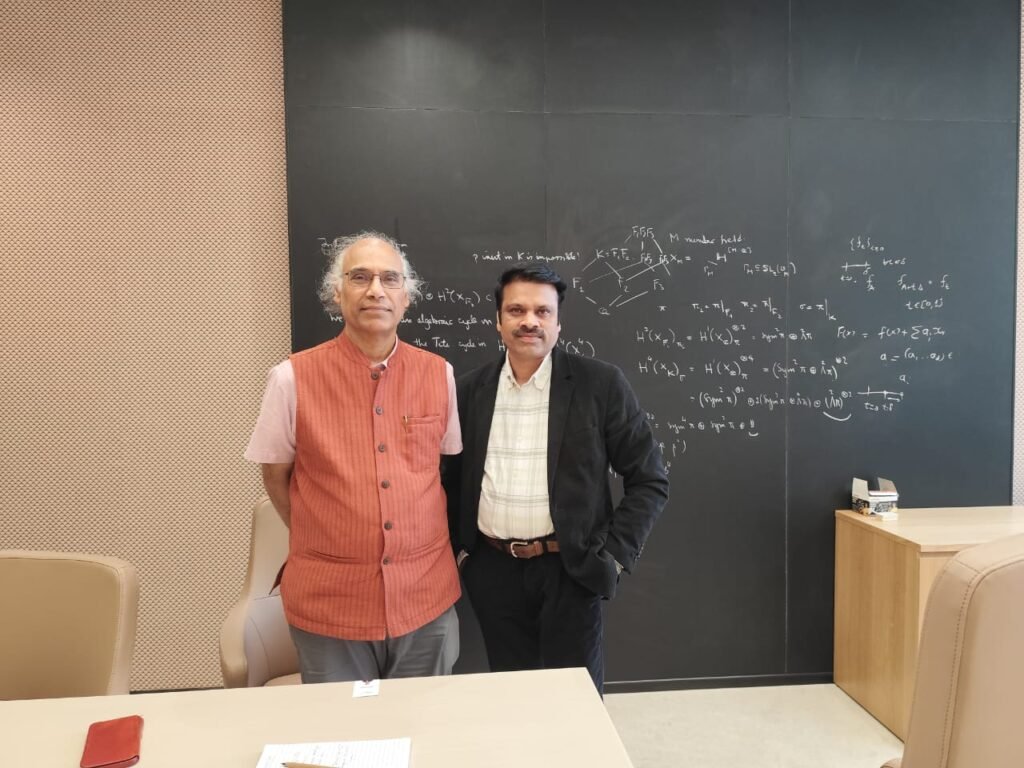
Rusen Kumar’s Closing Reflections
In this wide-ranging conversation, two themes emerged consistently: opportunity and perception. Prof. Murty believes India’s mathematical talent is undeniable, but it often goes underutilized due to lack of opportunity and societal misperceptions. Institutions like the Lodha Mathematical Sciences Institute (LMSI) can provide the structure, resources, and global linkages that talented individuals need. At the same time, society must shift how it views mathematics — not as a fearful subject or a fallback profession, but as the engine of development.
The institute’s activities — from thematic programs to international collaborations, from fellowships to the upcoming Indian Congress of Mathematicians — are all geared toward building an ecosystem where mathematics is respected, loved, and practically impactful. Publications, outreach, and policy advocacy will ensure the message travels beyond academia into classrooms, governments, and rural societies.
As India marches toward its centenary of independence in 2047, mathematics could well be the key that unlocks its aspiration of becoming a fully developed nation. Under the vision of Abhishek Lodha and the stewardship of Prof. Murty, the Lodha Mathematical Sciences Institute is positioned to play a transformative role in that journey.
(About Rusen Kumar: Rusen Kumar is a social leader, journalist, and author of 20 books, widely recognized for promoting Corporate Social Responsibility (CSR) in India.)
(India CSR)
- Our gratitude to readers for being with us while reading this interview. Readers are encouraged to write to the Editor with their valuable feedback. editor@indiacsr.in


